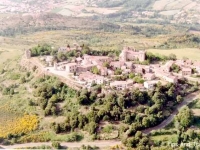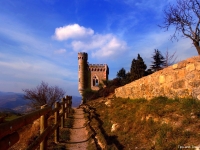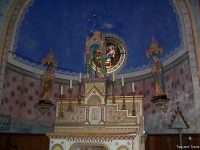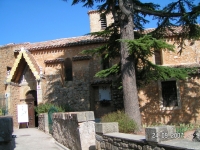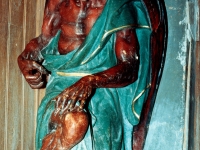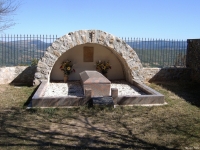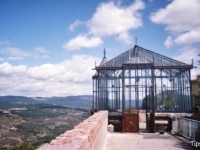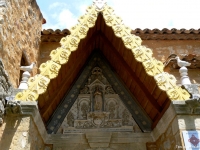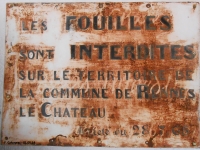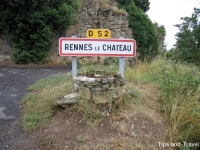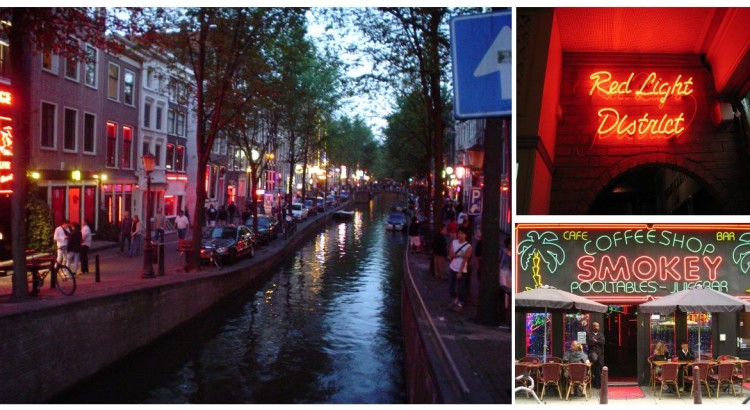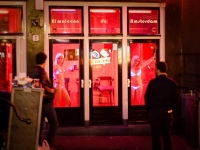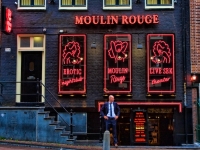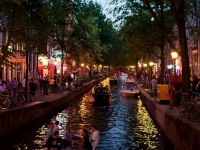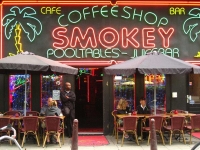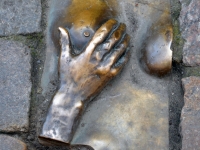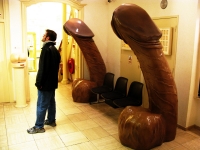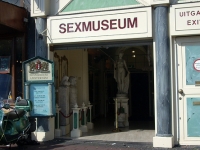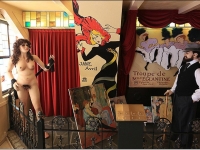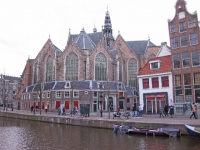Rennes-le-Château (Rènnas del Castèl in Occitan) is a small commune approximately 5 km (3 miles) south of Couiza, in the Aude department in Languedoc in southern France.
This small French hilltop village is known internationally, and receives tens of thousands of visitors per year, for being at the center of various conspiracy theories, and for being the location of an alleged buried treasure discovered by its 19th-century priest Bérenger Saunière, the precise nature of which is disputed by those who believe in its existence, because of the sheer diversity of conflicting theories.
Father Bérenger Saunière story
The village received up to around 100,000 tourists each year during the height of popularity of Dan Brown’s bestselling novel The Da Vinci Code. The modern reputation of Rennes-le-Château rises mainly from claims and stories dating from the mid-1950s concerning the local 19th-century priest Father Bérenger Saunière. These stories influenced the authors of the worldwide bestseller The Holy Blood and the Holy Grail in 1982, and that work in turn influenced Dan Brown when he wrote The Da Vinci Code, published in 2003.
The first known popular article about Father Bérenger Saunière was written by Roger Crouquet in the Belgian magazine Le Soir illustré, published in 1948. The author was visiting the Aude to meet his friend Monsieur Jean Mauhin, who originated from Belgium and had moved to Quillan to open a factory making bells and hats, and at his suggestion decided it would be a good idea to visit Rennes-le-Château. There Crouquet collected the testimonies of the villagers about Saunière, one person told how the priest “preferred wine and women to practising the priesthood. At the end of the last century he had a rather original idea. He placed in foreign newspapers, especially in the United States, an advertisement announcing that the poor priest of Rennes-le-Château lived among heretics and had only the most meagre of resources. He moved the Christians of the whole world to such pity by announcing that the old church, an architectural gem, was heading for unavoidable destruction if urgent restoration work was not undertaken as soon as possible.” Crouquet also added: “The stoup which decorates the entrance to the chapel is carried by a horned devil with cloven hooves. An old woman remarked to us: ‘It’s the old priest, changed into a devil’.”
Crouquet’s article faded into obscurity and it was left to Noël Corbu, a local man who had opened a restaurant in Saunière’s former estate (called L’Hotel de la Tour) during the mid-1950s, to turn the village into a household name. Corbu began circulating stories that Father Saunière had discovered “parchments” while renovating his church in 1892 that were to do with the treasure of Blanche of Castile, and which “according to the archives” consisted of 28,500,000 gold pieces. This was the treasure of the French crown assembled by Blanche de Castile to pay the ransom of Saint Louis, a prisoner of the infidels, the surplus of which she had hidden at Rennes-le-Château. Saunière had only found one part of it, so it was necessary to continue his investigations.
Corbu also claimed that Rennes-le-Château was the capital of the Visigoths called Rhedae, but this was another exaggeration: it was Narbonne that held that position. His claim can be traced back to a book by Louis Fédié entitled Le comté de Razès et le diocèse d’Alet (1880), that contained a chapter on the history of Rennes-le-Château; published as a booklet in 1994. Noël Corbu incorporated this story into his essay L’histoire de Rennes-le-Château that was deposited at the Departmental Archives at Carcassonne on 14 June 1962. Fédié’s assertions concerning the population and importance of Rennes-le-Château have since been contradicted by archaeology and the work of more recent historians.
Corbu’s story inspired author Robert Charroux to develop an active interest, and in 1958 with his wife Yvette and other members of The Treasure Seekers’ Club (that he founded in 1951), scanned the village and its church looking for treasure using a metal detector.
Corbu’s story was published in the book by Robert Charroux Trésors du monde in 1962, that caught the attention of Pierre Plantard, who decided to use and adapt Corbu’s story for his own gain involving the mythological history of the Priory of Sion, that inspired the 1967 book L’Or de Rennes by author Gérard de Sède. De Sède’s book contained reproductions of “parchments” allegedly discovered by the priest Bérenger Saunière alluding to the survival of the line of Dagobert II and Plantard claimed to be directly descended from that monarch. Plantard and de Sède fell out over book royalties and Philippe de Chérisey, Plantard’s friend, claimed to have forged the parchments as part of the plot. At the same time, Plantard and de Chérisey were also involved in planting fabricated documents in France’s Bibliothèque Nationale that dealt with the secret history of the Priory of Sion.
In 1969, a British supporting actor and screenwriter for the BBC by the name of Henry Lincoln read de Sède’s book while on holiday in the Cévennes in 1969 that led him to inspire three BBC Two Chronicle documentaries between 1972-1979, working some of its material into the 1982 non-fictional bestseller Holy Blood, Holy Grail, that he co-wrote with Michael Baigent and Richard Leigh. The book claimed Bérenger Saunière discovered proof (possibly the Marriage Certificate) that Jesus Christ and Mary Magdalene were married and their descendants became the Merovingian dynasty. Among the book’s hypotheses are the possibilities that this was the secret of the Priory of Sion; that Pierre Plantard could have been the descendant of Jesus Christ; that the source of Saunière’s wealth could have involved the blackmailing of the Vatican.
The hypotheses of Lincoln, Baigent and Leigh were later picked up in 2003 by Dan Brown’s bestselling novel The Da Vinci Code. Brown’s novel never specifically mentioned Rennes-le-Château, but some key characters in the book had related names, such as Saunière, named after the priest, and “Leigh Teabing”, whose first name was derived from Richard Leigh, and last name, Teabing, was an anagram of Baigent. Leigh and Baigent brought (and lost) a plagiarism suit against Brown in 2006.
The extraordinary popularity of The Da Vinci Code reignited the interest of tourists, who come to the village to see sites associated with Saunière and Rennes-le-Château.
Rennes-le-Château and Saunière both appear in best-selling author Steve Berry’s 2006 novel, The Templar Legacy. The novel directly refers to the history, site, and people associated with the town and its surrounding regions. He correctly describes in detail the locales and buildings located there. Berry includes explanations in his Writer’s Notes as to what is fact and what is fiction.






